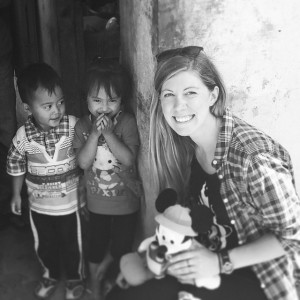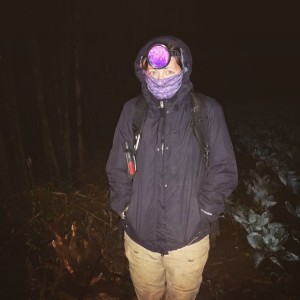For those of you who do not know me already, I’m Katie—one of Professor Anna Nekaris’ DPhil students. Unable to stay away long, I’m back for a second stint (after my MSc research) to the Little Fireface Project field site here in Cipaganti, West Java. I started working with LFP in 2013, while studying Primate Conservation at Oxford Brookes University. When I discussed my research interests in climate change and conservation with Professor Nekaris, it took little effort for us to realise the field site here in Java was an ideal location for the study, and that the Javan slow loris was in dire need of this research.

The main focus of my DPhil is looking at energetics of the Javan slow loris in the contexts of climate change and evolution. In terms of energetics, I am mainly interested in torpor use. Torpor is a physiological process of slowing down metabolism, and is often used to cope with extreme conditions such as limited food resources and extreme climates. It’s a relatively dangerous state to enter, from an energetics perspective. If you thought lorises were extreme for being the only venomous primate, that is only the start of their fascinating adaptations.
Here in Cipaganti, the lorises are coping with little-to-no forest with low temperatures. Their home range is located at about 1,350—1,650 meters above sea level, is next to a volcano and overlaps with an agroforest and village. The agroforest habitat is a mosaic of crops with interspersed bamboo patches and strips of trees that have been planted by farmers, so you can image how difficult it must be for these non-jumping primates!
To measure energetics, I am using a mixture of methods. I am doing full-night loris observations from the time they wake up until they go to sleep (5pm until 5 am) where I focus on their activity, inactivity and feeding/foraging behaviours. I am also attaching extremely light-weight temperature loggers to their collars. This is a non-invasive method that gives measurements of their skin temperature, and can later be used as an indicator for body temperature. To understand the habitat structure and floral development (as lorises eat a lot of nectar and gum) I also do vegetation and floral development monitoring every other week in each loris’ home range. I have also set up climate station loggers in trees (with help from our amazing pro tree-climbing trackers) to measure temperatures in each area.

So, why is this relevant for climate change research and conservation? With the rate of agricultural expansion, many animals are being pushed to higher altitudes and montane regions in order to find remaining forest area or a suitable home range. By observing the slow loris and its coping mechanisms in this extreme environment, I hope to produce a testable model to predict behavioural responses to future climate change that will be relevant for the conservation of slow lorises and other species in similar dilemmas.
- Katie Reinhardt, PhD Researcher
